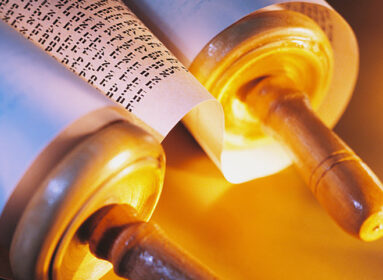
By Rabbi Shlomo Riskin
One of the most picturesque festivals of the year is the Sukkot – when we build and decorate a special “nature home” which will be lived in for an entire week. But what are we actually celebrating and what is the true meaning of the symbol of the sukkah? Is it the sukkah of our desert wanderings, the temporary hut which the Israelites constructed in the desert when they wandered from place to place? If so, then the sukkah becomes a reminder of all of the exiles of Israel throughout our 4,000-year history, and our thanksgiving to God is for the fact that we have survived despite persecution and assimilation, which still threaten to overwhelm those still living in the Diaspora.
Or is the sukkah meant to be reminiscent of the Divine “clouds of glory” which encompassed us in the desert with God’s rays of splendor, a fore-taste of the Sanctuary which served as the forerunner of our Holy Temple in Jerusalem? In the Grace after Meals during the Sukkot festival we pray that “the Merciful One restore for us the fallen tabernacle of David,” which would imply that the sukkah symbolizes the Holy Temple. The Talmud (B.T. Succot 11) brings a difference of opinion between Rabbi Akiva and Rabbi Eliezer as to which of these options is the true significance of our celebration.
The major biblical description of the festivals is found in Chapter 23 of the Book of Leviticus. There are two textual curiosities which need to be examined. The three festivals which were always considered to be our national festivals, and which also biblically appear as the “desert” festivals, are Pesach, Shavuot and Sukkot – commemorating when we left Egypt, when we received the Torah at Sinai and when we lived in desert booths. Rosh Hashana and Yom Kippur are more universal in nature and not at all related to the desert sojourn. It seems strange that in the biblical exposition of the Hebrew calendar Pesach and Shavuot are explained, after which comes Rosh Hashana and Yom Kippur, and only at the conclusion of the description comes Sukkot.
One can argue that this is the way the months fall out on the calendar year. However, the Israelites left Egypt for the desert and presumably they built their booths immediately after the Pesach. Would it not have been more logical for the order to have been Pesach, Sukkot, Shavuot, Rosh Hashana and Yom Kippur?
Secondly, the Festival of Sukkot is broken up into two parts. Initially, the Torah tells us: “And the Lord spoke to Moses saying: on the fifteenth day of this seventh month shall be the Festival of Sukkot, seven days for God these are the Festivals of the Lord which you shall call holy convocations” (Leviticus 23:33-38). It would seem that these last words conclude the biblical description of the festivals and the Hebrew calendar. But in the very next verse, the Torah comes back again to Sukkot, as if for the first time: “but on the fifteenth day of the seventh month, when you gather in the crop of the land, you shall celebrate God’s festival for a seven day period… You shall take for yourselves on the first day the fruit of a citron tree, the branches of date palms, twigs of a plaited tree (myrtle) and willows of brooks; and you shall rejoice before the Lord your God for a seven-day period… You shall dwell in booths for a seven-day period… so that your generations will know that I caused the people of Israel to dwell in booths when I took them from the Land of Egypt. I am the Lord your God” (ibid. Leviticus 23:39-44). Why the repetition? And if the Bible now wishes to tell us about the four species, why was this verse not linked to the previous discussion of the Sukkot booths?
The Vilna Gaon said that this repetition of Sukkot with the commandment concerning the Four Species is introducing an entirely new aspect of the Sukkot festival: the celebration of our entering into the Land of Israel. In fact, this second Sukkot segment opens with the words, “But on the fifteenth day of the seventh month when you gather the crop of the land (of Israel), you shall celebrate this festival to the Lord.”
Hence, there are two identities to the festival of Sukkot. On the one hand, it is a desert festival, alongside Pesach and Shavuot, which celebrates our desert wanderings and survivals while living in flimsy booths. On the other, Sukkot, the Four Species, represent our conquest and inhabitance of our homeland and signals the beginning of redemption turn the sukkah into rays of Divine splendor and an expression of the Holy Temple.
So which Sukkot do we celebrate? Both at the very same time! But when we sit in the sukka, are we sitting in transitory booths representative of our wandering or rather in a Divine sanctuary protected by rays of God’s glory? I think it depends on whether we are celebrating the festival in the Diaspora or in the Land of Israel!








 Southern New England Jewish Ledger
Southern New England Jewish Ledger










